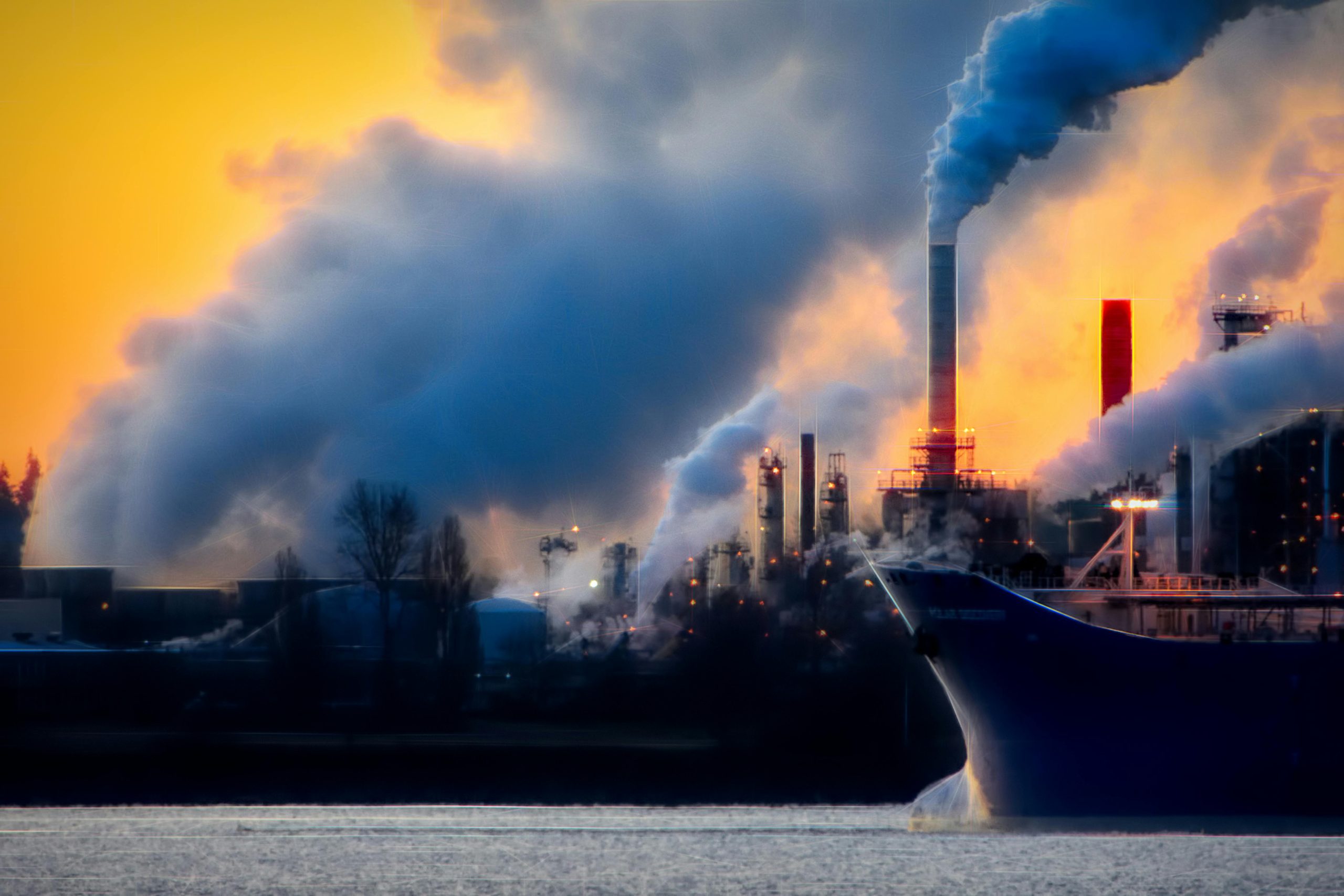It sounds like something from a work of science fiction: a transatlantic flight powered by the fumes of a steel mill, a designer perfume crafted from captured air pollution, a skyscraper strengthened by the very greenhouse gas that threatens our climate. Yet, this is not fiction. Across the globe, a new generation of industrial alchemists is flipping the script on carbon dioxide, transforming the world’s most notorious pollutant into a valuable resource. In a radical reimagining of manufacturing, today’s waste is becoming the feedstock for tomorrow’s economy.
For decades, the climate conversation has revolved around a simple, daunting imperative: stop emitting CO₂. But what if, alongside cutting emissions, we could also capture the carbon already being produced and recycle it? This is the central premise of Carbon Capture and Utilization (CCU), an emerging field that sees smokestacks not just as a problem, but as a potential mine. The vision is a “circular carbon economy,” where captured CO₂ is spun into fuels, chemicals, and consumer goods, locking it away in useful products instead of letting it warm the atmosphere.
The idea is gaining serious momentum. Global investors poured nearly half a billion dollars into carbon-utilization startups in 2022, and policy incentives like the U.S. Inflation Reduction Act are making the economics increasingly attractive. Proponents envision a future market worth trillions, turning billions of tonnes of captured carbon per year into a cornerstone of industry.
Perhaps the most eye-catching examples come from the consumer world. In Brooklyn, a startup called Air Company is capturing CO₂ and using renewable energy to combine it with hydrogen, creating high-purity ethanol. Their flagship products? “Air Vodka” and “Air Eau de Parfum.” The company claims that producing a single bottle of its vodka actively removes a pound of carbon dioxide from the atmosphere. It’s a powerful marketing hook that reframes luxury as an act of climate restoration. While a cocktail won’t save the planet, these niche products serve a crucial purpose: they demonstrate the technology’s potential in a tangible, relatable way.
But this new carbon economy extends far beyond the top shelf of the bar. California’s Newlight Technologies has pioneered a process where microorganisms consume captured CO₂ and methane to produce a biodegradable polymer called AirCarbon®. This versatile material, which behaves like a conventional plastic, is already being used in everything from cutlery and straws to fashion accessories for major brands like Nike and H&M. Imagine a world where your packaging and utensils not only disappear harmlessly but were made from greenhouse gases in the first place.
While consumer goods grab headlines, the real heavy lifting for the climate will happen in industrial sectors that are notoriously difficult to decarbonize. Take aviation. LanzaTech, a trailblazer in the field, has developed a process that uses bacteria to ferment carbon-rich emissions from industrial sites, like steel mills, into ethanol. This ethanol is then upgraded into sustainable aviation fuel (SAF). In 2018, a Virgin Atlantic flight made history by flying from Orlando to London powered, in part, by this recycled-pollution fuel. By burning a fuel made from captured carbon, the flight only re-released the CO₂ that was already destined for the atmosphere, creating a closed carbon loop. With new plants slated to produce tens of millions of litres of SAF annually, this technology offers a lifeline to an industry struggling to go green.
Arguably the most promising, and permanent, use for captured CO₂ lies beneath our feet. Concrete production is a colossal source of global emissions. But companies like Canada’s CarbonCure are turning this climate villain into a hero. They inject captured CO₂ into wet concrete during mixing. The CO₂ undergoes a chemical reaction, mineralizing into solid calcium carbonate—essentially, man-made limestone. This process not only permanently sequesters the carbon, preventing it from ever re-entering the atmosphere, but it also strengthens the concrete. Builders in New York City are already using this technology to construct buildings with a lower carbon footprint, turning the city’s skyline into a vast, functional carbon sink.
Of course, this carbon revolution is not without its hurdles. For now, most of these technologies operate at a small scale and carry a “green premium,” costing more than their fossil-fuel-derived counterparts. As one founder noted, these facilities need to scale up to the size of today’s oil refineries to make a meaningful dent in global emissions. Furthermore, the process is energy-intensive. For CCU to be a true climate solution, the energy used to capture and convert the CO₂ must come from renewable sources. Rigorous life-cycle accounting is essential to verify that these products genuinely reduce net emissions, rather than just shifting them around.
Experts are clear that CCU is not a silver bullet. It cannot replace the urgent need for deep, drastic cuts in emissions across every sector of the economy. Dissolving CO₂ into a soft drink only stores the gas until the bottle is opened. True climate benefit comes from locking carbon into long-lasting products like building materials or creating closed-loop systems for fuels.
Despite these challenges, the trajectory is clear. By creating a market for waste carbon, CCU provides a powerful financial incentive for industries to capture their emissions. Instead of paying a penalty or tax to pollute, a factory could soon earn revenue by selling its CO₂ as a raw ingredient. This flips the entire economic model of pollution on its head. From the foam in our mattresses to the fabrics in our cars and even the protein in our food, innovators are proving that the building blocks of a modern, sustainable economy can be sourced from thin air. It’s a monumental recycling project, one that seeks to remake our industrial world in a way that works with the planet, not against it.
Disclaimer: Important Legal and Regulatory Information
This report is for informational purposes only and should not be construed as financial, investment, legal, tax, or professional advice. The views expressed are purely analytical in nature and do not constitute financial guidance, investment recommendations, or a solicitation to buy, sell, or hold any financial instrument, including but not limited to commodities, securities, derivatives, or cryptocurrencies. No part of this publication should be relied upon for financial or investment decisions, and readers should consult a qualified financial advisor or regulated professional before making any decisions. Bretalon LTD is not authorized or regulated by the UK Financial Conduct Authority (FCA) or any other regulatory body and does not conduct activities requiring authorization under the Financial Services and Markets Act 2000 (FSMA), the FCA Handbook, or any equivalent legislation. We do not provide financial intermediation, investment services or portfolio management services. Any references to market conditions, asset performance, or financial trends are purely informational and nothing in this report should be interpreted as an offer, inducement, invitation, or recommendation to engage in any investment activity or transaction. Bretalon LTD and its affiliates accept no liability for any direct, indirect, incidental, consequential, or punitive damages arising from the use of, reliance on, or inability to use this report. No fiduciary duty, client-advisor relationship, or obligation is formed by accessing this publication, and the information herein is subject to change at any time without notice. External links and references included are for informational purposes only, and Bretalon LTD is not responsible for the content, accuracy, or availability of third-party sources. This report is the intellectual property of Bretalon LTD, and unauthorized reproduction, distribution, modification, resale, or commercial use is strictly prohibited. Limited personal, non-commercial use is permitted, but any unauthorized modifications or attributions are expressly forbidden. By accessing this report, you acknowledge and agree to these terms-if you do not accept them, you should disregard this publication in its entirety.



